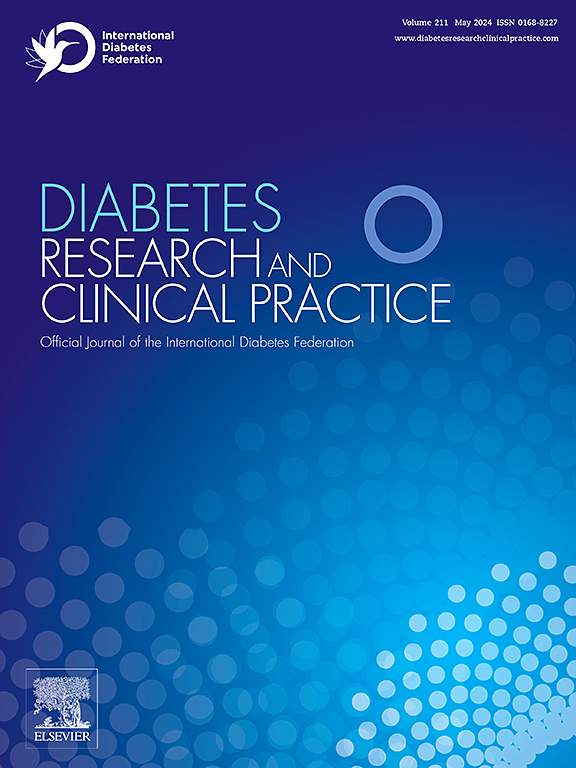Poor glycemic status as a risk factor for dementia in type 2 diabetes population: Findings from the Taiwan’s National Health Insurance Database
IF 6.1
3区 医学
Q1 ENDOCRINOLOGY & METABOLISM
引用次数: 0
Abstract
Aim
This study explored the association between poor glycemic status (PGS; hyperglycemia, hypoglycemia, or their combination [mixed]) and dementia risk in patients with type 2 diabetes (T2D).
Methods
In this retrospective cohort study, we conducted a secondary analysis using data from Taiwan’s National Health Insurance Database spanning the years 2000 to 2015. We employed propensity score matching (1:1) based on sex, age, index year, and inclusion date to select a comparison cohort, the Cox proportional-hazards regression analysis was performed to assess the effect of PGS on the risk of dementia. Kaplan–Meier survival analysis was performed to compare the cumulative incidence of dementia between patients with T2D and PGS and those without PGS.
Results
Among 192,977 patients with T2D, 57,893 had PGS during the follow-up period. Of them, 4,342 patients (7.5 %) developed dementia. PGS status was positively associated with dementia risk (adjusted hazard ratio: 2.01; 95 % confidence interval [CI]: 1.58–2.68). The risks of dementia were 1.56 (95 % CI: 1.22–2.08) for hypoglycemia, 1.64 (95 % CI: 1.30–2.18) for hyperglycemia, and 3.10 (95 % CI: 2.48–4.12) for mixed PGS.
Conclusions
In patients with T2D, PGS is associated with an increased risk of dementia, particularly in those experiencing significant fluctuations in glycemic levels.
求助全文
约1分钟内获得全文
求助全文
来源期刊

Diabetes research and clinical practice
医学-内分泌学与代谢
CiteScore
10.30
自引率
3.90%
发文量
862
审稿时长
32 days
期刊介绍:
Diabetes Research and Clinical Practice is an international journal for health-care providers and clinically oriented researchers that publishes high-quality original research articles and expert reviews in diabetes and related areas. The role of the journal is to provide a venue for dissemination of knowledge and discussion of topics related to diabetes clinical research and patient care. Topics of focus include translational science, genetics, immunology, nutrition, psychosocial research, epidemiology, prevention, socio-economic research, complications, new treatments, technologies and therapy.
 求助内容:
求助内容: 应助结果提醒方式:
应助结果提醒方式:


